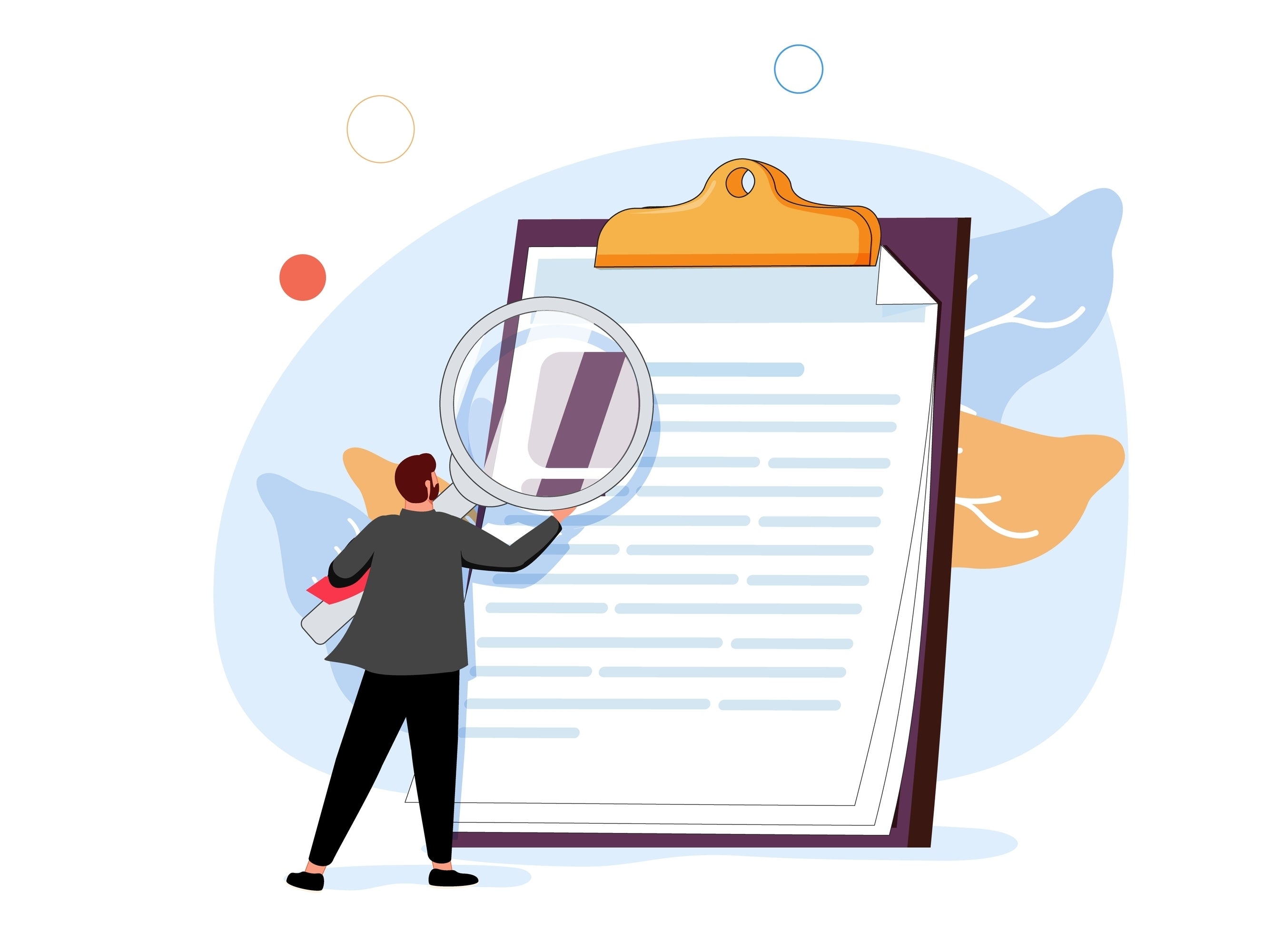Banner artwork by Cheer-J-ane / Shutterstock.com
Cheat Sheet
- Growth. Form I-9 and E-Verify compliance involves many different parts of the enterprise, allowing in-house counsel to collaborate with other parts of the enterprise.
- Complexity. For employers who employ a high number of foreign nationals, compliance will be a complex exercise that benefits from the assistance of counsel.
- Process. Mitigate risks by implementing processes and policies for all situations throughout the Form I-9 lifecycle.
- Risk. Understand the requirements and inform the business about taking smart risks.
All employers operating in the United States must verify the identity and employment authorization for each employee hired after November 6, 1986 using the Form I-9 (or E-Verify as discussed below). Failure to comply can result in fines of up to US$2,500 for each violation, including technical violations, which can add up fast. Fines have exceeded US$20,000,000, and penalties can include cease and desist orders, compliance monitoring, and debarment from federal contracts. The complexity of the Form I-9 process, and the severity of the sanctions for noncompliance, are often overlooked by many organizations, frequently at their peril.
A company’s Form I-9 program can greatly benefit from earnest involvement from in-house counsel. Participation in the process represents an opportunity for in-house counsel to add important value to the enterprise. This article briefly explains the employment eligibility verification process, recent changes, and ways that in-house counsel can — and should — become involved.
The complexity of the Form I-9 process, and the severity of the sanctions for noncompliance, are often overlooked by many organizations, frequently at their peril.
Recent Form I-9 changes and developments
The COVID-19 pandemic brought on major changes in how the Form I-9 can be completed. In March 2020, ICE announced that, in an exercise of prosecutorial discretion, it would allow for deferred physical inspection of Form I-9 documents for certain individuals. In late 2021, USCIS and ICE signaled a willingness to revisit the in-person document inspection requirement. On July 25, 2023, USCIS published the Alternatives to Physical Inspection (API) rule, allowing certain employers to complete Form I-9 virtually.
Virtual Form I-9 completion
Beginning August 1, 2023, employers who are E-Verify participants in good standing may complete the document review associated with Form I-9 via televideo as long as:
- The employee uploads the documents prior to the televideo meeting.
- The employer retains images of the front and rear (where appropriate) of the documents for the entirety of the retention period.
- The employer conducts a televideo session where they examine the uploads and ask the employee to “show” those documents on the screen to determine whether they reasonable appear genuine and relate to the individual before completing the applicable section of Form I-9 (including noting the video inspection).
- The employer creates an E-Verify case for the individual.

While the new rule’s E-Verify requirement may leave non-E-Verify participating employers sour (because it is not available to them in this iteration but instead can only participate in virtual verification after submitting to ICE’s supervision), E-Verify participants can make sweet lemonade from it. Those with a centralized HR function, distributed workforces, or seeking to be more accommodative of employees with disabilities can benefit from this new rule if they decide to switch to using E-Verify.
In-house counsel can help the employer weigh the risks of making the switch to E-Verify. Also, those seeking to streamline or contract out Form I-9 completion and management stand to benefit from the added flexibility it provides. In an environment where new hire experience is paramount, virtual completion removes an additional obstacle from the onboarding process — the dreaded trip to the office or “authorized representative” — for Form I-9 completion.
Those with a centralized HR function, distributed workforces, or seeking to be more accommodative of employees with disabilities can benefit from this new rule if they decide to switch to using E-Verify.
On August 3, 2023, DHS announced the beginning of a pilot program under which non-E-Verify participants could virtually conduct Form I-9 document inspections. While not required to participate in E-Verify, these employers must sign an agreement with ICE, subjecting them to increased oversight, with no safe harbor or grace provision. Entering this pilot program has much more risk than the Optional Alternative 1 due to the increased — and open-ended — oversight. Again, in-house counsel should be involved in this decision to explain the risks.
Changes to the reverification requirement
Prior to the recent regulatory amendments, companies seeking to complete a reverification did not have to conduct an in-person inspection of an original document. Many companies, especially those that petitioned for employment-based nonimmigrants such as H-1B, E, or L visa holders, took the evidence of continuing work authorization from their immigration counsel and completed the reverification portion of Form I-9; there was no involvement by the employee.
Under the recent regulatory amendments, employers are required to conduct either an in-person inspection of an original document or a virtual inspection, as outlined above. This change will require some organizations to revamp their reverification processes, which should be reviewed by in-house counsel.

New version of Form I-9
USCIS published the new version of Form I-9, Form I-9 instructions, and Form M-274 (the Form I-9 manual) contemporaneously with the API rule. While the new Form I-9 has very few substantive changes, it is formatted very differently from previous versions of Form I-9. It introduces new terminology — such as Supplement A or B and “noncitizen” — not used in prior versions. Employers must implement the latest version of the Form I-9 no later than November 1, 2023, or face fines and penalties. The instructions also contain amendments, such as inspection requirements, that must be incorporated into HR policies. In-house counsel should review the procedures for filling out the form and consider internal compliance audits to correct the inevitable mistakes in filling out the form.
In-house counsel should review the procedures for filling out the form and consider internal compliance audits to correct the inevitable mistakes in filling out the form.
State laws and E-Verify
As stated earlier, E-Verify is largely a voluntary program except when it isn’t. Mandatory E-Verify participation can be triggered by either:
- Entering into a contract containing the FAR E-Verify clause.
- A decision by the company to employ STEM OPT individuals.
- A state or local ordinance requiring E-Verify use.
- An agreement between ICE and the company (enrollment in the IMAGE program or as part of a Form I-9 penalty settlement agreement).
On July 1, 2023, Florida joined Alabama, Arizona, Georgia, Mississippi, North Carolina, South Carolina, Tennessee, and Utah as a state that requires nearly all employers to create an E-Verify case for each new hire. In-house counsel can assist the employer in determining if E-Verify compliance is required.
DOJ IER: Here to stay
This past summer, DOJ-IER has announced six different settlements, ranging from US$2,000 for one instance of document abuse to almost US$500,000 for citizenship status discrimination. This type of enforcement action has been a focus of the current presidential administration, resulting in significant growth in the size of the office. DOJ-IER seeks to assert and collect fines and penalties well into the six figures, and naming and shaming offenders in press releases.
While document abuse (when an employee proffers sufficient evidence of work authorization and is told to produce other or additional documentation) has long been the bread-and-butter of DOJ-IER’s work, they are expanding heavily into the use of AI and automated systems in hiring. Employers are encouraged to build and implement employment eligibility verification policies around issues like these with the assistance of legal counsel and test those policies regularly.
Where can in-house counsel assist?
Counsel can assist with Form I-9 and E-Verify compliance by continuing — and expanding — on their role as trusted advisor to the human resources and business units. Form I-9 and E-Verify compliance impacts many functions, including the business (continuity of operations and workforce planning by understanding which employees will need reverification and could lose work authorization), human resources (drafting and implementing Form I-9 and E-Verify policies), the compliance function (ensuring that HR is applying the policies consistently), and lastly the securities function (if a publicly traded company, any audit or sanction relating to Form I-9 and E-Verify would have to be reported to shareholders).
Counsel can assist with Form I-9 and E-Verify compliance by continuing — and expanding on their role as trusted advisor to the human resources and business units.
Counsel can assist in these areas by becoming informed of the rudimentary Form I-9 and E-Verify requirements and understanding “where to look” when questions arise. Counsel is most impactful when they assist the human resource function by collaborating with them on policies directly relating to Form I-9 and E-Verify, including who within the HR function will own the process, how cases will be processed, how problem cases (individuals with expiring work authorization, those who cannot meet Form I-9 requirements, or those who have a Final Nonconfirmation from E-Verify) will be handled, and reviewing all policies for any discrimination issues.

In working alongside their partners, counsel should look to address critical areas in the Form I-9 and E-Verify lifecycle and process. As discussed, counsel should work alongside the HR partner to develop and review policies related to Form I-9 and E-Verify compliance. Those policies should address, and counsel should be familiar with, the three-day requirement for Form I-9 completion, reverification requirements (both which documents need to be reverified at all and when such reverification can and must take place), the ever-evolving List of Acceptable Documents for Form I-9, and any possible document abuse or discrimination issues.
Of special note is developing policies around E-Verify, including whether the organization should or must participate in E-Verify and how cases with a Tentative or Final Nonconfirmation will be handled, and how cases will be tracked and handled if E-Verify is not operational (E-Verify suffers technical failures and will be inoperable during a government shutdown). Lastly, counsel should be able to evaluate the viability of virtual verification for the organization. Understanding these critical areas, even at high level, can elevate counsel from being a good partner to a great partner.
Counsel can also assist when reviewing electronic Form I-9 and E-Verify solutions prior to engaging a vendor. Counsel should keep in mind, among other things:
- Is the system compliant with 8 C.F.R. §§ 274a.2(e)-(h)? Namely, are there password-protected user profiles that allow for the capture of events and the production of audit trails? Does the system allow for the confirmation of an electronic signature at the time of the transaction?
- Written plans, policies, and procedures for detecting and prosecuting security incidents and breaches.
- Sources of data if the company were to terminate service; ensuring that if your company leaves the provider, you have access to all relevant data, especially in the instance of a Form I-9 audit or inspection.
- Can the user edit an existing Form I-9 in the system?
Reviewing the electronic I-9 and E-Verify system agreement
- Indemnity issues: Very little guidance exists on what constitutes an acceptable audit trail or electronic signature for Form I-9 purposes, so in-house counsel are well-advised to engage the prospective provider on why they believe their system complies with the regulation and who bears the cost if the provider’s system is deficient.
- Are there set-up fees, and what type of training is offered?
A brief history of Form I-9
In 1986, the US Congress passed the Immigration Reform and Control Act (IRCA), which established the employment eligibility verification regime — the Form I-9 process — still in effect today. Section 274A of the Immigration and Nationality Act (INA or Act) requires employees to complete Section 1 of Form I-9 no later than the date of hire and the employer to complete Section 2 of Form I-9 no later than three days after hiring. Employers must ensure that individuals with expiring work authorization are “reverified” using Supplement B of Form I-9 before their current work authorization expires. Historically, the employer portion of Form I-9 has included an in-person review of the documents produced to establish identity and work authorization. Employers must retain Form I-9 and supporting documents for three years from the date of hire or one year from the date of termination, whichever is later.
In 1987, the first iteration of Form I-9 was published, and in 2004, Congress authorized the electronic completion, signature, and storage of Form I-9. The regulations implementing electronic completion were first promulgated in 2006 and finalized in 2010. United States Citizenship and Immigration Services (USCIS) “owns” and administers Form I-9, and Immigration and Customs Enforcement (ICE) conducts audits and investigations under Section 274A. The Office of Federal Contract Compliance Programs (OFCCP) also audits the I-9 compliance of federal contractors.
In 1990, Congress added "unfair documentary practices" as a discriminatory practice.
Along with requiring employers to verify identity and work authorization, IRCA also prohibits discrimination in the administration of the Form I-9 and the hiring process. These provisions, codified at section 274B of the INA, are enforced by the Immigrant and Employee Rights Section of the Department of Justice (DOJ-IER), previously known as the Office of Special Counsel.” In 1990, Congress added “unfair documentary practices” as a discriminatory practice. This prohibits employers from requesting more or different documents during the Form I-9 process if the documents initially proffered reasonably appeared to be genuine, related to the individual, and evinced employment authorization.
E-Verify program
Existing alongside Form I-9 is the E-Verify program, which was established in 1996 when Congress passed the Illegal Immigration Reform and Immigrant Responsibility Act of 1996 (IIRIRA). An electronic, web-based program administered by USCIS, E-Verify checks Form I-9 information against information found in DHS and Social Security Administration databases.
The increasingly complex landscape of form I-9 and E-Verify compliance demands the involvement of in-house counsel beyond the traditional confines of HR departments. Collaboration with HR and compliance teams is critical in developing robust policies that safeguard the organization from legal risks and enhance overall compliance.
Essential role of in-house counsel
The increasingly complex landscape of form I-9 and E-Verify compliance demands the involvement of in-house counsel beyond the traditional confines of HR departments. Collaboration with HR and compliance teams is critical in developing robust policies that safeguard the organization from legal risks and enhance overall compliance.
Disclaimer: The information in any resource in this website should not be construed as legal advice or as a legal opinion on specific facts, and should not be considered representing the views of its authors, its sponsors, and/or ACC. These resources are not intended as a definitive statement on the subject addressed. Rather, they are intended to serve as a tool providing practical guidance and references for the busy in-house practitioner and other readers.




